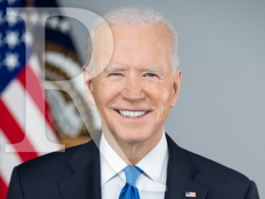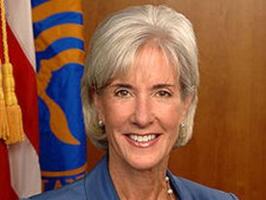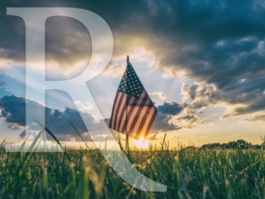54% Oppose Health Care Law’s Individual Mandate
Most voters again oppose the new health care law’s individual mandate which requires every American to have health insurance by January 1 or else face financial penalties.
The latest Rasmussen Reports national telephone survey shows that just 34% of Likely U.S. Voters now support the mandate. Fifty-four percent (54%) are opposed, up from 50% in late September. Twelve percent (12%) are undecided. (To see survey question wording, click here.)
Support for the individual mandate has changed little since early July. Fifty-six percent (56%) opposed the mandate at that time.
National and state government exchanges, established by the law to offer health insurance, began accepting applications on October 1 but have been plagued with problems. Three weeks ago, voters by a 51% to 34% margin favored delaying the individual mandate because of these problems.
For the first time, however, over half (51%) of voters now know whether their state has established such an exchange. Twenty-four percent (24%) say they still do not know if their state has such an exchange, and just as many (25%) are not sure. Awareness about exchanges has steadily risen from 32% in January.
Four percent (4%) of those surveyed now say they or someone in their immediate family has bought insurance through a new exchange.
(Want a free daily e-mail update? If it's in the news, it's in our polls). Rasmussen Reports updates are also available on Twitter or Facebook.
The survey of 1,000 Likely Voters was conducted on November 9-10, 2013 by Rasmussen Reports. The margin of sampling error is +/- 3 percentage points with a 95% level of confidence. Field work for all Rasmussen Reports surveys is conducted by Pulse Opinion Research, LLC. See methodology.
Fifty-three percent (53%) of voters now share an unfavorable opinion of the new national health care law. An increasing number of news reports suggest that millions of Americans could be forced to change their existing health insurance plans and pay more because of the law.
Just over half (51%) of voters continue to oppose a single-payer health care system where the federal government provides coverage for everyone. Thirty-four percent (34%) favor a government-run health care system, while 14% are not sure. These findings have changed little this year.
Most voters over 40 oppose the individual mandate, while younger voters are narrowly divided. Younger voters are more likely to know if their state has a health insurance exchange.
Married voters are much more strongly opposed to the individual mandate than unmarrieds are.
A plurality (49%) of Democrats continues to favor the mandate. Eighty percent (80%) of Republicans and 54% of voters not affiliated with either major party oppose the health insurance requirement. Most Democrats (56%) like the idea of a single-payer government-run health care system. Most Republicans (81%) and unaffiliated voters (56%) are opposed.
Voters who favor the individual mandate are much more enthusiastic supporters of a single-payer system than those who oppose the mandate are.
Voter interest in the health care law remains very high, with 88% who say they have been following recent news reports about it at least somewhat closely. This includes 48% who have been following Very Closely.
Seventy-one percent (71%) of voters believe it’s at least somewhat likely that the president or senior officials in his administration were aware long before the law began being implemented that health insurance costs would go up for some Americans, contrary to what they said publicly.
Just over a year ago, most voters didn't know enough about Obama Cabinet member Kathleen Sebelius to have any kind of opinion of her, even though the secretary of Health and Human Services was in the powerful position of implementing the health care law. Now that Obamacare's off to a troubled start, a plurality (44%) views Sebelius unfavorably. But voters are evenly divided over whether she should be fired or resign.
Additional information from this survey and a full demographic breakdown are available to Platinum Members only.
Please sign up for the Rasmussen Reports daily e-mail update (it’s free) or follow us on Twitter or Facebook. Let us keep you up to date with the latest public opinion news.
The survey of 1,000 Likely Voters was conducted on November 9-10, 2013 by Rasmussen Reports. The margin of sampling error is +/- 3 percentage points with a 95% level of confidence. Field work for all Rasmussen Reports surveys is conducted by Pulse Opinion Research, LLC. See methodology.
Rasmussen Reports is a media company specializing in the collection, publication and distribution of public opinion information.
We conduct public opinion polls on a variety of topics to inform our audience on events in the news and other topics of interest. To ensure editorial control and independence, we pay for the polls ourselves and generate revenue through the sale of subscriptions, sponsorships, and advertising. Nightly polling on politics, business and lifestyle topics provides the content to update the Rasmussen Reports web site many times each day. If it's in the news, it's in our polls. Additionally, the data drives a daily update newsletter and various media outlets across the country.
Some information, including the Rasmussen Reports daily Presidential Tracking Poll and commentaries are available for free to the general public. Subscriptions are available for $4.95 a month or 34.95 a year that provide subscribers with exclusive access to more than 20 stories per week on upcoming elections, consumer confidence, and issues that affect us all. For those who are really into the numbers, Platinum Members can review demographic crosstabs and a full history of our data.
To learn more about our methodology, click here.





